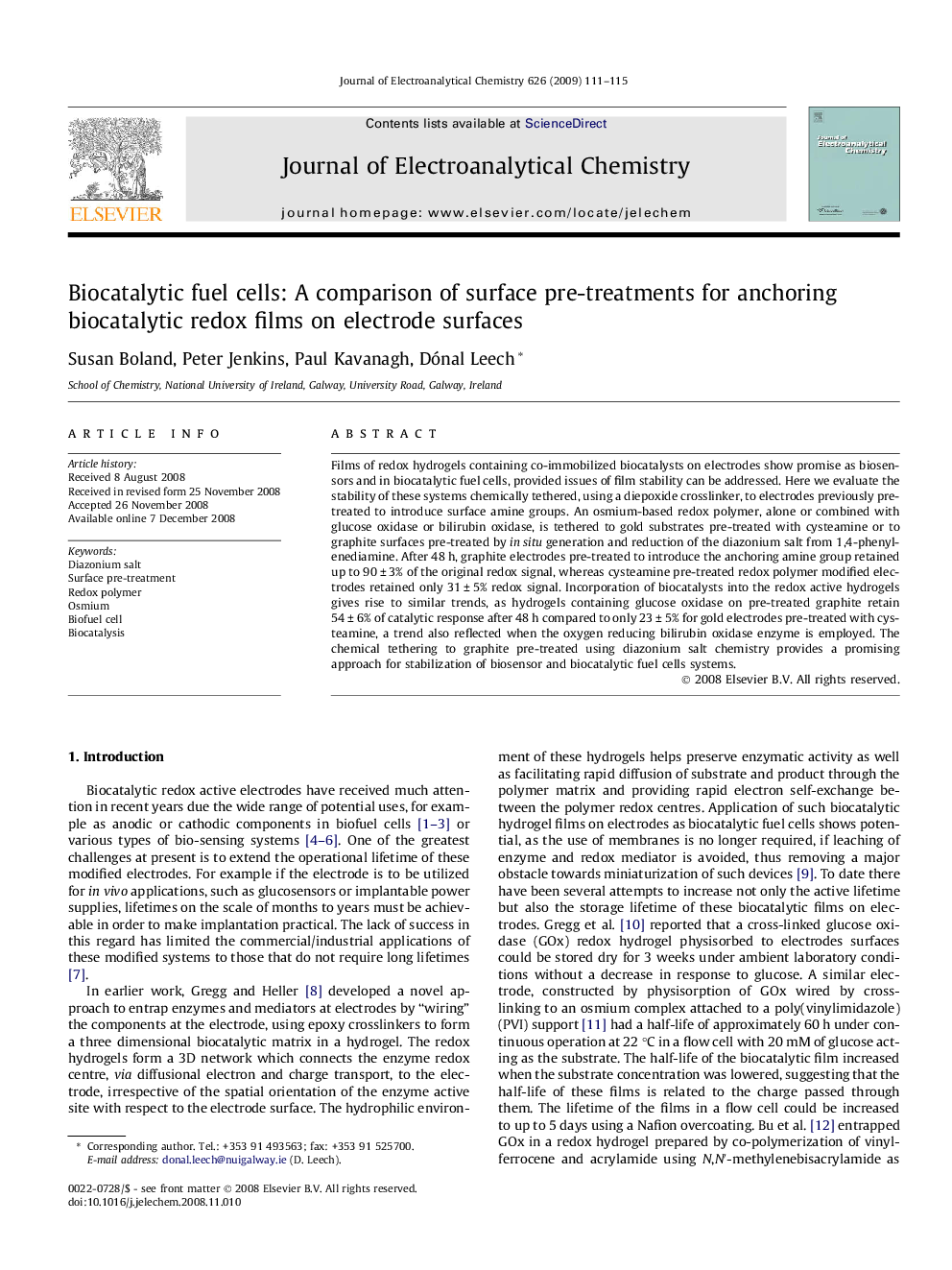| Article ID | Journal | Published Year | Pages | File Type |
|---|---|---|---|---|
| 220251 | Journal of Electroanalytical Chemistry | 2009 | 5 Pages |
Films of redox hydrogels containing co-immobilized biocatalysts on electrodes show promise as biosensors and in biocatalytic fuel cells, provided issues of film stability can be addressed. Here we evaluate the stability of these systems chemically tethered, using a diepoxide crosslinker, to electrodes previously pre-treated to introduce surface amine groups. An osmium-based redox polymer, alone or combined with glucose oxidase or bilirubin oxidase, is tethered to gold substrates pre-treated with cysteamine or to graphite surfaces pre-treated by in situ generation and reduction of the diazonium salt from 1,4-phenylenediamine. After 48 h, graphite electrodes pre-treated to introduce the anchoring amine group retained up to 90 ± 3% of the original redox signal, whereas cysteamine pre-treated redox polymer modified electrodes retained only 31 ± 5% redox signal. Incorporation of biocatalysts into the redox active hydrogels gives rise to similar trends, as hydrogels containing glucose oxidase on pre-treated graphite retain 54 ± 6% of catalytic response after 48 h compared to only 23 ± 5% for gold electrodes pre-treated with cysteamine, a trend also reflected when the oxygen reducing bilirubin oxidase enzyme is employed. The chemical tethering to graphite pre-treated using diazonium salt chemistry provides a promising approach for stabilization of biosensor and biocatalytic fuel cells systems.
